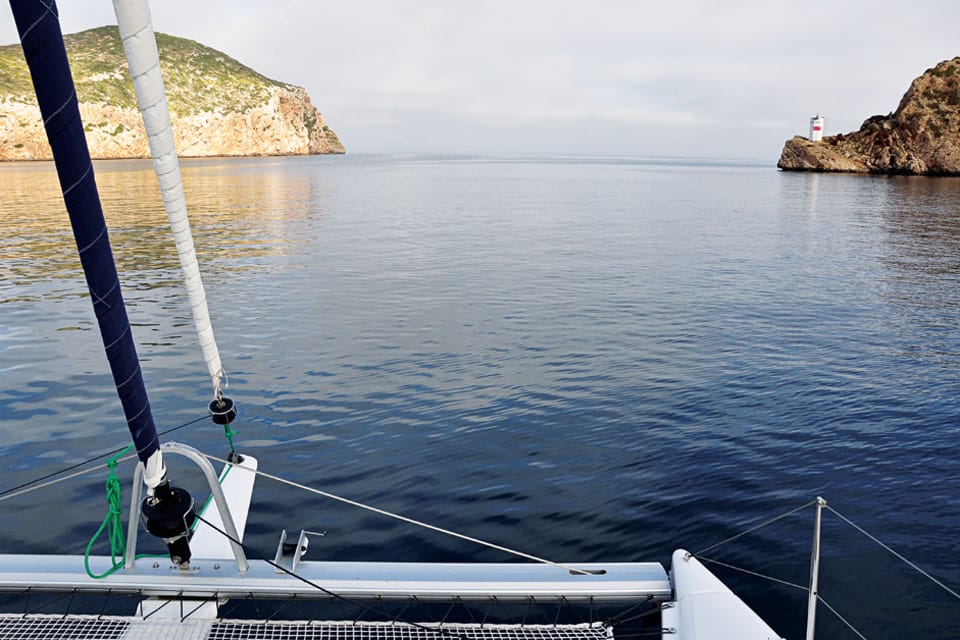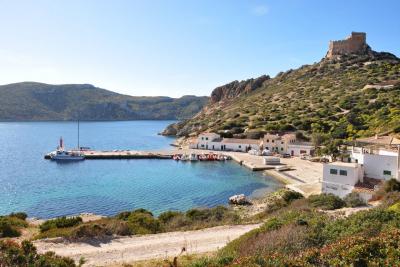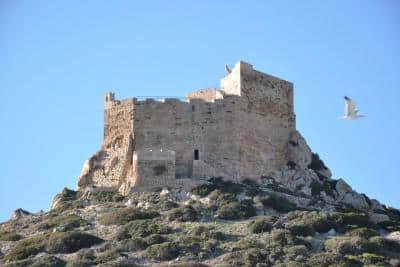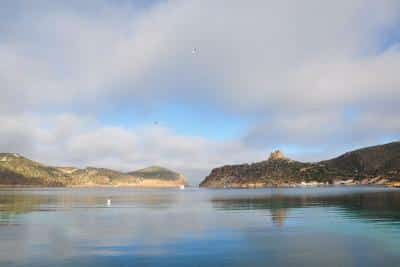
Sailing Cabrera Spain
It became a fateful, inhospitable lockup for 9,000 of Napoleon’s French soldiers after a defeat in the Peninsular War, from 1808 to 1814. Of that total number of troops sent there, only 3,600 survived the starvation and isolation.
Docked at a marina aboard Simba, my Mahé 36 catamaran, during a leisurely sojourn in the Med, talk of this beautiful yet melancholy place got the best of me. After asking about visiting requirements, I filled in the paperwork to sail a privately owned boat there. The same requirement applies to charter boats.
With about 50 mooring buoys in the harbor, permits are issued for one night only in the months of July and August, two nights in June and September and up to seven nights the rest of the year. Cost is according to boat length. Anchoring is forbidden. No fishing, no camping, no fires, no pets, no dumping; rest rooms are provided.

My partner, Joanie Jacobs, and I left the following day from Palma; a light breeze lifted us the 30 miles. The harbor is difficult to discern until you are upon it because it opens up into a fantastic natural bay with a fortress on the left that rises from a clump of stones. The castle was built in the 15th century; its primary purpose was to guard the natural harbor and to stop pirates from using it as a staging area to raid the surrounding islands.
I was transfixed. Stone walls climb from the sea to line the entrance. We went there in March, and it was wonderfully quiet. By nightfall there were only six other boats in the harbor. The water was beautifully clear with the bottom purely visible; the bay was dotted with small dwellings along the eastern shore and the landing was just south of the castle. An array of solar panels, spread out on the northeast hill, helped power the small settlement.

We dinghied to the landing, a small area that included a concrete pier, several official-looking RIBs, a wooden sailboat and a few other small boats. Our goal was to take the steep climb to the fortress. Its sheer walls are part of the landscape; it starts from a rough stone outcropping and grows upward into smooth vertical walls. A small portal leads to a spiral staircase that exits onto the parapets. The battlement has embracements for half-a-dozen cannons; to the east, a large vaulted room would have been the magazine for gunpowder. Above the embracement is a smaller observation area with a large frayed Spanish flag snapping in the breeze.

The views were panoramic — to the south, the harbor of Cabrera; to the north, Cap de Ses Salines, the southern tip of Mallorca; to the northeast, the small windswept Illa dels Conills, and a group of 15 islets punctuated by the lighthouse at Illa Horadada.
We left the next morning and motored back to Palma. The sea, like glass, reflected the hills and sky, and there was a light mist.
The setting was serene and peaceful, but I wondered how such a place could be so many different things — pirates’ cove, garrison, death camp, and today a nature reserve. Time dictates function, and Cabrera now has reverted to what it had been for eons: a natural and beautiful safe harbor from the sea.
Web Extras
For details about visiting requirements, log on to Spain’s national park website.
Contact Naviera Balear, the Sunsail Sailing Vacations local partner in Palma, for details about visiting Cabrera.
This article first appeared in the February 2014 issue of Cruising World.








